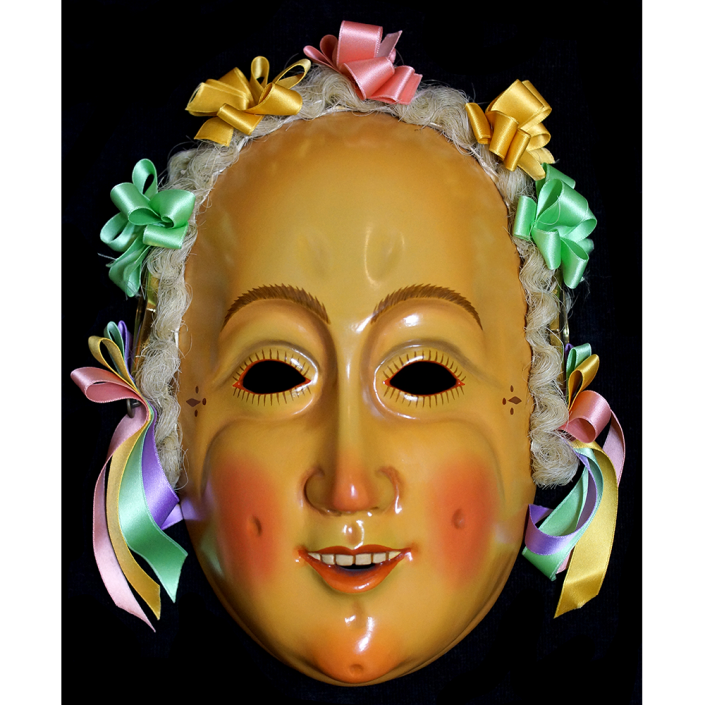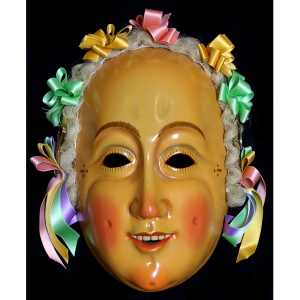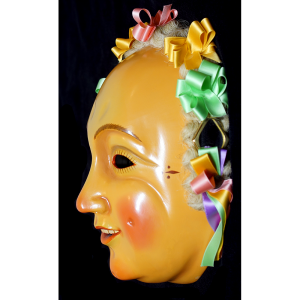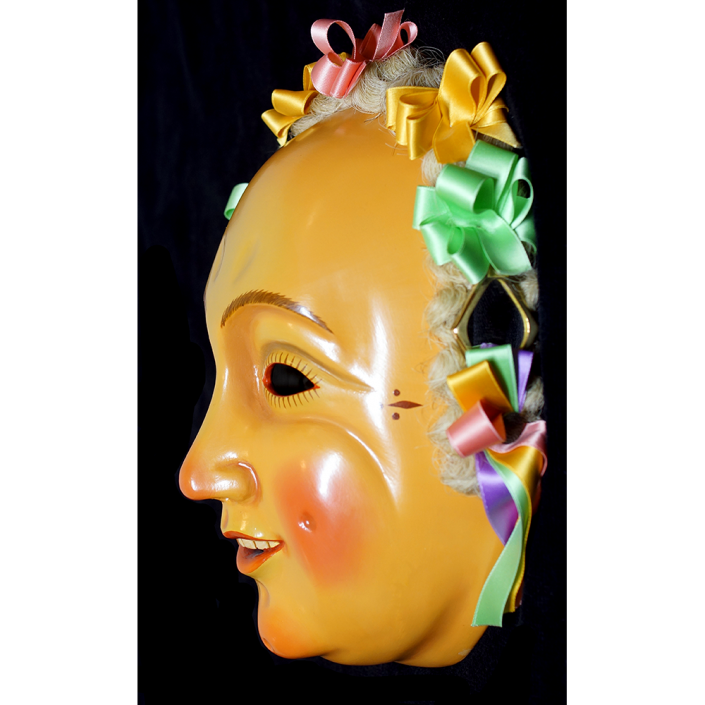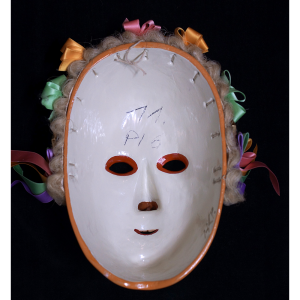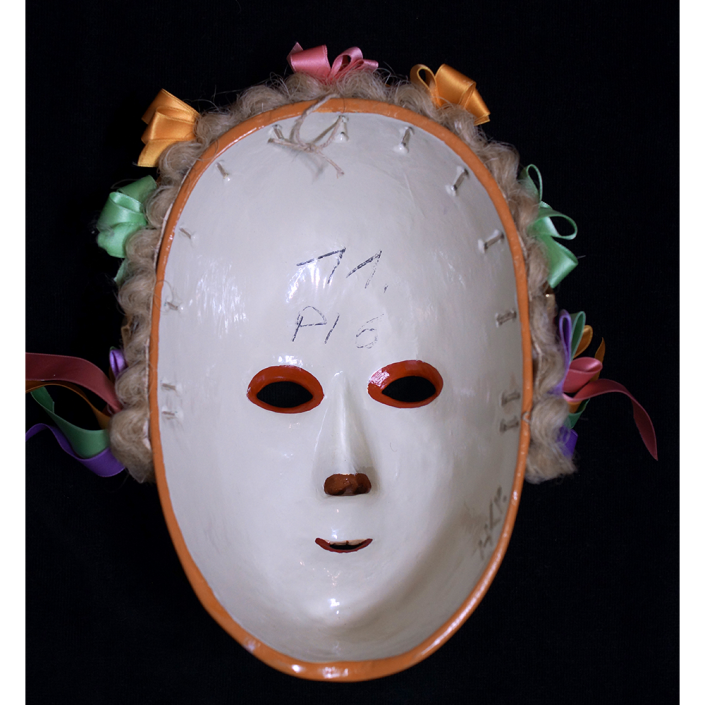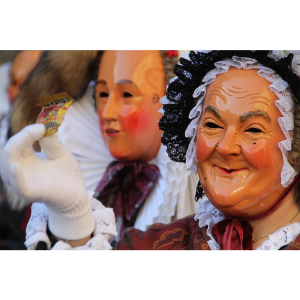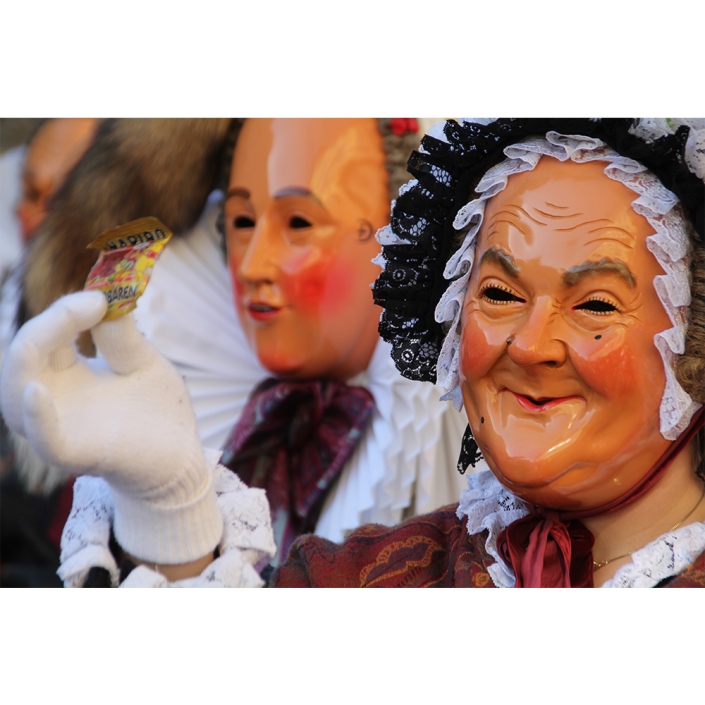TITLE: Fasnet Gschell Mask
TYPE: face mask
GENERAL REGION: Europe
COUNTRY: Germany
SUBREGION: Swabia
ETHNICITY: Swabian
DESCRIPTION: Gschell narro (clown) mask
CATALOG ID: EUDE009
MAKER: Helmut Kramer (Rottweil, 1931-2016)
CEREMONY: Fasnet (Carnival)
AGE: ca. 1970s-1980s
MAIN MATERIAL: wood
OTHER MATERIALS: oil paint; horsehair; satin ribbons; mirrors
In many parts of Swabia and Bavaria, Carnival (usually called Fasnet or Fastnet in this region of Germany) is celebrated with parades of masked clowns (Narren). The clown parade (Narrensprung) is organized by guilds, all members of which wear similar costumes and masks. Each town has its own guilds, with some overlap in styles of Narro. Like this one, most are creepy in an inimitably Germanic way. Their purpose is to usher in the spring with joy and laughter.
Carnival in Rottweil extends back at least to the 14th century, and the Gschell—the smiling, childlike clown—is probably the oldest and most dominant character of Fasnet in Rottweil. They appear in white linen costumes with as many as six leather belts holding large bells, which he makes ring by walking with a bouncy step (Jucken). In the past, they also wore three fox tails on their hood, a practice that has been fortunately discontinued with increasing enlightenment about animal rights, and sausages on his wrist as a symbol of fertility. The Gschell also wears a horsehair wig (Rosshaarkranz) with ribbons and mirrors to satirize vanity.
This specific mask was carved by the late master, Helmut Kramer of Rottweil.
Regrettably, the best texts on Carnival in Bavaria and Swabia are still available in German only: Heinz Wintermantel’s Hoorig, hoorig isch die Katz (Würzburg: Konrad Theiss, 1978) and Dick Eckert’s Die Werdenfelser Fasnacht und ihre Larven (Volk Verlag München, 2015).
